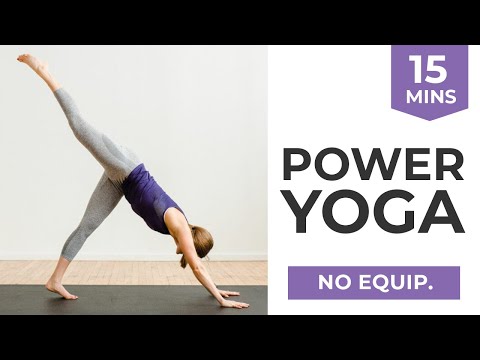
Yoga is more than just poses and breathing exercises. It includes a vast array of yogic sciences. These practices have been around for thousands of years and are based on extensive testing. They must be capable of reproducing results in order to prove their effectiveness. Learn more about yogic sciences. But what exactly are the yogic disciplines? And how can they be of benefit to you? Here are some facts that will help to explain the importance of practicing yoga.
Yoga as a discipline
Yoga has the goal of purifying the mind. That will then allow the Atma, or spirit, to manifest in Brahman. Unrighteous and unjust actions in this lifetime and in our previous lives cause mental impureties. As the Gita says, the world can be a place of sadness, but we can learn how to transcend it and regain our divinity. Yoga, which purifies the mind, is what we need to fully grasp this.
Asanas can be described as poses that increase flexibility. They improve blood circulation, detoxify the body, and enhance the function of all body systems. While pranayama exercises are good for the respiratory system, some help the body detoxify. Matsyendrasana (a yoga pose that massages one's abdominal organs) is a very well-known and popular pose. Other poses include sukhasana and adhomanasana.

Yoga as a science
Yoga, an ancient art form of yoga, has a rich body of knowledge that is based on the Rishis' experiential and experimental studies. These texts include Vedas. Any person who truly cares can confirm their validity. Yoga has many benefits, and this ancient art form is well-known. Yoga offers many other benefits than the physical and mentally.
Experts believe yoga can be beneficial for patients with stress-related or psychosomatic disorders. There are reports of people experiencing less anxiety or pain due to practicing yoga than those who practice other forms of exercise. There is also less chance of injury since yoga is generally slow and done with awareness. Some postures in yoga can inflict injuries. Yoga practitioners need to be aware of the potential dangers involved in performing these poses. Yoga can be helpful for psychological disorders like anxiety, depression, and insomnia.
Yoga as a method to attain enlightenment
The ultimate goal of all yogis is enlightenment, whether physical, spiritual, or mental. Enlightenment refers to a state of complete freedom in which you stop identifying with your feelings and are one with all other beings. Although there are many methods to attain enlightenment it is usually based on universal principles. Meditation, yoga asana, asanas and yoga as a spiritual discipline are all ways to attain enlightenment.
Yoga practice is a way for you to bring out your right and left sides. It helps to integrate the corpus callosum and connect it to its right side. This allows you live a richer and more authentic life. This goal can be difficult for many people living in modern times, but it is possible. Yoga practices are a way to reach enlightenment.

Yoga is a form or meditation
Hatha yoga and asanas are two of the yogic sciences that emphasize stillness. These techniques naturally bring about a still mind, as our minds do not like being still. The key is to pay attention to the movements of your body and how you speak. This will allow you to become more still and more open for meditation. What are the best methods to achieve this?
Yoga encourages conscious action through the suspension of mind fluctuations. Awareness leads to a higher quality life and less suffering. Numerous studies have shown that yoga can improve the quality of life for people suffering from chronic pain. Yoga is a proven method to maintain your mind and body at its best for thousands upon thousands of years. So how do you find a class that is right for you?
FAQ
What do I need in order to practice yoga?
A mat, some that can be folded, loose clothes and a blanket or towel to cover your head when you lie down will be necessary.
Also, you may need props like straps to hold your blocks, straps to support your bolsters, blankets or towels in order for some poses.
In general, however you won't need anything. If you're interested in starting yoga, you need a desire to make positive changes in your life and a willingness to commit to the process.
What are the best yoga mats?
There are many kinds of yoga mats. You can choose one based upon its price, size, and durability.
A high-quality mat will be thick enough for protection, but thin enough to be easily moved.
A cheap mat may not provide adequate support.
Which yoga is best suited for beginners?
Beginners can get lost in the variety of styles and poses that yoga offers.
The most popular type of yoga is Hatha Yoga which focuses on physical fitness and stretching. It can help reduce stress and improve concentration.
Kundalini Yoga is another popular style that involves meditation and breathing techniques. This practice can have many health benefits, including improved flexibility, balance, and strength.
Yin Yoga is another option for beginners who want to focus on relaxation and calming their minds. Yin Yoga focuses heavily on the ability to hold poses or positions for longer periods.
Statistics
- According to the Agency for Healthcare Research and Quality, falls are incredibly common among older adults in nursing facilities. Even the simplest ones can increase the risk of death (24). (healthline.com)
- Start your Fall off right with 20% off All Access Membership when you sign up by 9/25! (corepoweryoga.com)
- A 2020 review of 27 studies (1,805 total participants) of yoga interventions in children or adolescents found reductions in anxiety or depression in 70 percent of the studies, with more promising results for anxiety. (nccih.nih.gov)
- Lock in 25% off your Founding Member rate. (corepoweryoga.com)
- The American Psychological Association recently shared that 84% of American adults feel the impact of prolonged stress (5). (healthline.com)
External Links
How To
Can I do yoga during pregnancy?
Your ability to safely perform certain poses can be affected by pregnancy. You should always consult your doctor before starting a new workout program.
There are many poses you could still do while pregnant. Here are some tips.
-
It is not a good idea to lift heavier than shoulder-level weights for pregnant women. Instead, you can use dumbbells or lightweight resistance bands.
-
Avoid deep twists. They could cause pressure to your stomach.
-
Before you have children, avoid backbends. This can place excessive strain on the lower back.
-
Don't sit cross-legged or lie down on your stomach until you deliver your baby.
-
Do not do inverted poses such as headstands or handstands unless your doctor has cleared you.
-
Keep your practice time to no more than 30 minutes per day
When you're ready, you can continue doing yoga throughout your pregnancy. Your doctor can help determine when you are ready and when to stop practicing yoga.